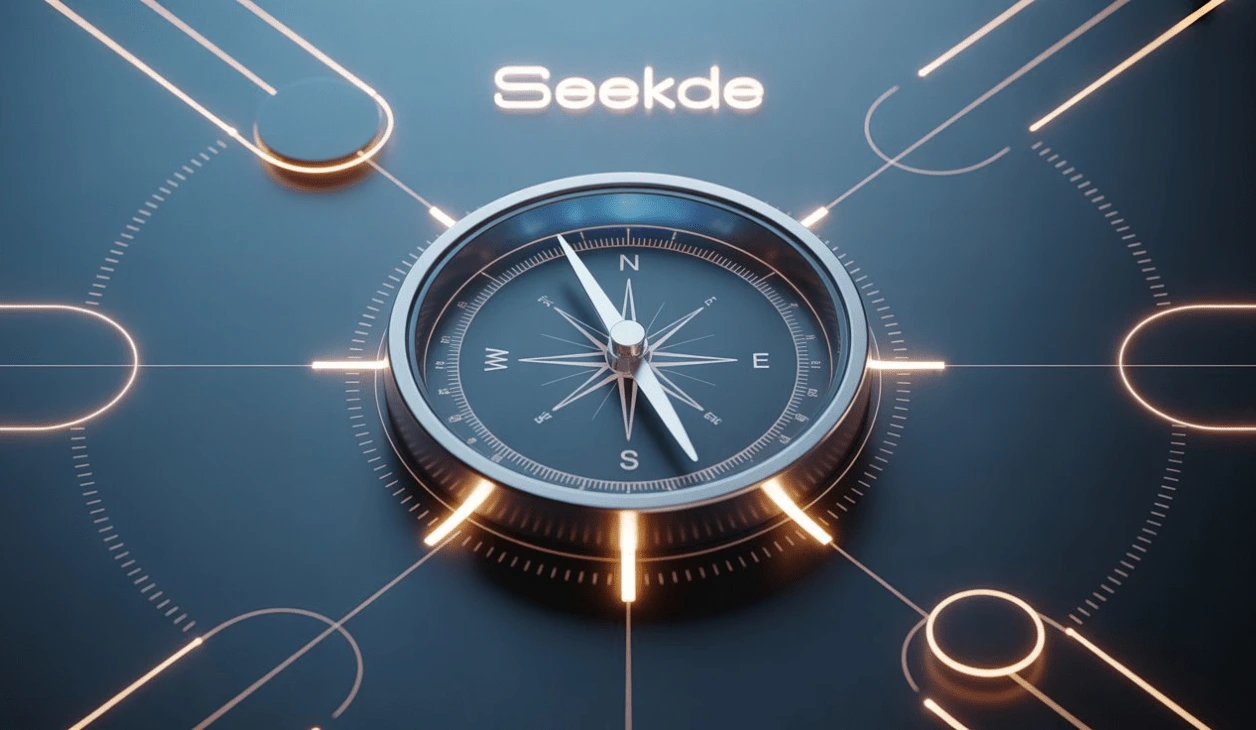
What Is Seekde? A New Force in Digital Discovery
In an age overflowing with data, information, tools, and platforms, navigating the digital world can be confusing. This is where seekde comes in. Seekde is an emerging concept / platform (or at least a promising idea) aiming to transform how we search, learn, and connect online. In this article, we will explore what seekde might be, how it could work, why it matters, and what its opportunities and challenges are.
Using “seekde” in the title, the first paragraph, and in subheadings helps ensure focus and clarity. Our goal is to make the idea of seekde accessible to readers of varying familiarity with technology.
1. Origins and Meaning of Seekde
1.1 Etymology and Name
The name seekde is intriguing and somewhat enigmatic. It appears to combine “seek” (to look for something, to search) with “de” (which could be a suffix, an abbreviation, or a stylistic choice). The result is a coined term rather than a word with a long historical lineage.
Some interpretations suggest that “de” could hint at “development,” “discovery,” “degree,” or “domain.” In that sense, the name might evoke the idea of seeking discovery, seeking development, or searching within a domain. Because the term is novel, it offers a blank canvas for branding, meaning, and direction.
1.2 How Seekde Is Presented in Digital Sources
Several sources describe seekde as a “smart search platform” or an “intelligent discovery engine.” For example:
- Seekde is often described as focusing less on returning mere hyperlinks and more on delivering meaningful, synthesized answers. voolex.com+1
- Some sources portray seekde as a digital ecosystem for learning, discovery, and knowledge mapping. Seekde
- Others emphasize it as a platform blending discovery + development in the digital space. Merlin Physio+1
- There is also a mention of seekde being a no-code/low-code data extraction platform (though this seems less mainstream). NisinSheep
From these various portrayals, it seems that seekde is not yet rigidly defined or uniform. It may be best understood as a concept in flux—one with promise rather than a fully mature, fixed product.
2. The Core Philosophy Behind Seekde
To understand why seekde matters, we need to look at the philosophy that underlies it. What differentiates it from other tools or ideas? The following principles help reveal its essence.
2.1 Search → Discovery (Not Just Matching)
Traditional search engines excel at matching keywords and returning lists of web pages. Seekde aims to go further: it wants to turn search into discovery. That means not just matching terms, but understanding intent, context, and meaning. Seekde is imagined as a bridge from a question to a deeper insight, rather than just a set of links.
2.2 Knowledge Mapping & Connections
One of the strong themes around seekde is mapping knowledge. That is, not just giving isolated facts, but showing relationships between ideas, data, and themes. For instance, if you search for “climate change,” seekde might show you related subtopics (policy, science, economics, local effects), and how they interconnect.
In short: seekde sees knowledge as a network, not as disconnected islands.
2.3 Adaptive / Personalized Experience
Because people approach searches differently (beginners, experts, casual users), seekde is often described as adaptive—it tailors results to your prior knowledge, preferences, and style. Over time, it learns from your interactions to produce more relevant, helpful responses.
2.4 Balancing Human & Machine Intelligence
Seekde’s philosophy seems to value human thinking, not replacing it. The idea is to support, guide, and augment human inquiry, rather than fully supplant it. The machine (AI, algorithms) plays a role, but the human remains active in judgment, direction, and context.
2.5 Trust, Credibility, and Noise Filtering
In a digital era full of misinformation, one of the promises of seekde is to filter noise, prioritize trustworthy sources, and present information in a way that users can verify and critique. The idea is not blind automation, but curated, transparent discovery.
3. How Seekde Works: Key Components
Though seekde is not yet a fully established, universally deployed platform, we can sketch a plausible architecture based on how sources talk about it. Below are core components that a functional seekde system might incorporate.
3.1 Natural Language Understanding (NLU) & Semantic Parsing
To understand user queries in context, seekde would use natural language processing (NLP) techniques. Instead of focusing purely on keyword matching, it interprets meaning, intent, and nuance. This allows it to answer more complex and conversational queries.
3.2 Aggregation & Synthesis
Seekde collects information from multiple sources—web pages, databases, academic journals, structured datasets—and then synthesizes it into cohesive, readable responses. Rather than giving you ten separate articles, it compresses and organizes relevant insights into one output.
3.3 Knowledge Graphs & Ontologies
Under the hood, seekde would rely on knowledge graphs or ontological structures that represent entities (people, places, ideas) and their relationships. This helps it map connections, show related topics, and provide structured overviews.
3.4 Personalization & Feedback Loops
As you use the system, your behavior (clicks, follow-up queries, time spent) provides feedback. Seekde uses that to refine relevancy, adapt to your style, and anticipate your next question. Over time, it becomes more attuned to each user.
3.5 Cross-Domain Integration
Seekde may integrate multiple knowledge domains (science, business, health, arts). It’s not siloed. This allows you, for example, to ask a question that spans economics and climate, or biology and ethics, and get integrated insight.
3.6 Interface & Interaction Design
The front end matters a lot. Seekde likely offers:
- A clean, conversational interface
- Visualizations (maps, graphs, diagrams of concepts)
- Step-by-step exploration (you can “zoom in” or “zoom out” on subtopics)
- Recommendation of “related paths” to explore
In sum, seekde is imagined not just as a back-end engine, but as a user-centric experience.
4. Use Cases and Applications of Seekde
One of the best ways to understand seekde is through imagining how it might be used across different domains. Below are possible use cases and real-world scenarios.
4.1 Education & Learning Support
- Students: Suppose a student searches for “photosynthesis process.” Seekde won’t just give a definition. It might show the chemical reactions, connect to environmental impact, suggest study paths (beginner → advanced), and highlight controversies or current research.
- Teachers: Educators may use seekde to design lesson plans, gather interdisciplinary content, or quickly find credible sources and visual aids.
- Lifelong Learners: For curious minds, seekde provides a structured path to explore new topics, showing how ideas connect and evolve.
4.2 Research & Academia
- Literature Review: Researchers can use seekde to aggregate relevant papers, summarize key findings across studies, and map gaps in knowledge.
- Cross-Disciplinary Queries: Asking questions that span fields (e.g. “neuroscience of mindfulness”) becomes more feasible because seekde integrates domains.
- Trend Analysis: Tracking shifts or emerging topics in a field could be easier, seeing how new ideas relate to older ones.
4.3 Professional / Business Use
- Market Research: A marketer can ask “consumer trends in wearable tech 2025” and receive an integrated response combining stats, reports, and emergent themes.
- Strategic Planning: Business leaders might use seekde to explore scenarios, risks, and innovations in a particular industry.
- Content Strategy: Writers, bloggers, or agencies can use seekde to identify gaps, trending topics, or cluster ideas for content campaigns.
4.4 Personal Inquiry & Exploration
- Health & Wellness: If someone wants to learn about “diet + mental health,” seekde could combine medical findings, anecdotal insights, and lifestyle suggestions (with disclaimers).
- Hobbies & Crafts: Suppose a user wants to learn about “woodworking techniques” — seekde can map from basic tools → materials → design principles → safety.
- Travel & Culture: Asking about a destination might provide not just places to visit, but historical context, cultural links, and thematic routes.
4.5 Data Extraction & Automation (Emerging Angle)
One source suggests that seekde could act as a no-code / low-code data extraction platform, enabling users (especially marketers or analysts) to extract structured information from websites or documents without needing deep programming. NisinSheep
If this version of seekde exists or is evolving, it positions seekde not only as a discovery engine but as a tool for acquiring and structuring raw data
5. Benefits and Advantages of Seekde
What does seekde promise that makes it worth attention? Below are the key advantages.
5.1 Efficiency & Time Savings
Traditionally, research means opening multiple tabs, reading many pages, comparing details, and stitching together insights. Seekde can compress that process—giving you synthesized answers, curated overviews, and a guided path—all in one place.
5.2 Depth & Context over Surface Answers
Seekde doesn’t just spit back a quick definition; it offers context, related topics, and pathways. That promotes deeper understanding rather than superficial browsing.
5.3 Personalization & Relevance
Because seekde adapts to your style and previous behavior, it can deliver more relevant and targeted results, tailored to your level of knowledge and interest.
5.4 Cross-Domain Discovery
Seekde’s capacity to integrate multiple fields lets users explore interdisciplinary connections. That can spark creativity, innovation, and unexpected insights.
5.5 Trust & Reduced Noise
By filtering out low-quality sources, highlighting credible ones, and organizing information transparently, seekde can reduce the frustration of misinformation or shallow content.
5.6 Scalability for Different Users
Seekde can serve many audiences: students, teachers, professionals, casual learners. Its adaptive framework allows it to scale across levels of expertise.
6. Challenges, Risks, and Criticisms of Seekde
No concept is perfect, and the idea of seekde is no exception. Let’s examine potential challenges, limitations, and criticisms.
6.1 Ambiguity & Hype
Since seekde is still a nascent or emerging concept, much of what is written about it is speculative, inconsistent, or promotional. Without a stable, widely accepted implementation, critiques are hard to test.
6.2 Data Quality & Source Trust
If seekde is aggregating and synthesizing information, its value depends strongly on source trust. If it includes unreliable inputs, the synthesis could mislead. Ensuring high-quality sources and transparency about provenance is difficult.
6.3 Algorithmic Bias & Filter Bubble
Personalization is a double-edged sword. Over-tailoring can create filter bubbles, where users see only what the system thinks they want to see, rather than challenging ideas. Biases in algorithms or data sources could skew results.
6.4 Complexity & Learning Curve
For less tech-savvy users, a platform with knowledge graphs, visual maps, or multi-layered responses may feel overwhelming. Striking the balance between sophistication and usability is hard.
6.5 Cost, Infrastructure, and Scalability
Building and maintaining the backend—indexing massive data, semantic understanding, knowledge graph maintenance—is resource intensive. Ensuring fast responsiveness across many users is technically challenging.
6.6 Intellectual Property and Licensing Issues
Aggregating content across diverse sources raises questions about licensing, copyright, fair use, and attribution. Seekde must carefully navigate those legal and ethical dimensions.
6.7 User Trust & Adoption
Users may resist change. Many are used to Google, Wikipedia, or familiar tools. Convincing people to adopt a new paradigm of search is as much a social/psychological challenge as a technical one.
7. The Future of Seekde
What might the future hold for seekde? While the path is speculative, we can imagine a few promising directions and trends.
7.1 Conversational & AI-Driven Interfaces
As AI improves, seekde may increasingly become conversational: you ask a question, refine it through dialogue, and the system answers with depth, visuals, and follow-up suggestions. This shift is already seen in AI chatbots and assistants.
7.2 Integration with Other Platforms & Tools
Seekde might integrate with:
- Learning Management Systems (LMS)
- Knowledge bases
- Research tools (e.g. reference managers)
- Productivity suites
Such integrations allow seamless transitions between seeking knowledge and applying it.
7.3 Domain-Specific Versions
We might see verticals of seekde specialized for medicine, law, business, engineering, etc. Each version would use domain-specific ontologies, datasets, and quality filters.
7.4 Community & Crowdsourced Input
To enrich the knowledge and correct errors, seekde could incorporate community contributions: peer review, annotations, commentary, moderated input from domain experts.
7.5 Enhanced Visual & Exploratory Tools
Graphical maps of knowledge, “topic webs,” zoomable concept maps, interactive timelines—these tools could become central to how users explore.
7.6 Monetization & Business Models
Seekde might adopt freemium models, subscription tiers, enterprise licensing, APIs for developers, or even value-based pricing (e.g. pay for insights or reports). Some sources suggest a freemium model is plausible. The Data Scientist+1
7.7 Ethical & Transparent AI
Given rising concern over AI fairness, seekde must evolve with explainable AI, transparent source attribution, adjustable filters, user control over personalization, and strong privacy protections.
8. How Seekde Compares with Other Approaches
To see where seekde fits, let’s compare it with existing paradigms.
| Approach / Tool | Primary Function | Strengths | Weaknesses (vs Seekde) |
|---|---|---|---|
| Traditional Search Engines (Google, Bing) | Keyword-based search & indexing | Broad coverage, speed, mature ecosystem | Little synthesis, too many links, not always context-aware |
| Q&A / Answer Engines (StackExchange, Quora) | Community answers to specific questions | Human insight, specific context | Limited scalability, uneven coverage, questionable quality control |
| AI Chatbots (GPT, Bard) | Conversational replies & content generation | Generative, flexible, contextual | May hallucinate, lack transparency, inconsistent sources |
| Knowledge Graph Tools (Wikidata, DBpedia) | Structured data and relationships | Well-curated, reliable structure | Less natural language support for casual users |
| Topic / Trend Platforms (e.g. Trend watching, BuzzSumo) | Insights on trending content | Good for signals and topical data | Not rich in comprehensive knowledge depth |
Seekde aims to combine strengths:
- The coverage and scale of search engines
- The insight and reasoning of Q&A communities
- The generative and contextual abilities of AI
- The structured relationships of knowledge graphs
In other words, seekde sits at an intersection—or perhaps as a next step—between these tools.
9. Getting Started with Seekde
If you want to try working with or exploring seekde (or a concept like it), here are steps and tips to get started.
9.1 Search Experimental Platforms / Prototypes
Keep an eye on startups, research labs, or experimental tools that claim to do semantic search, knowledge graphs, or AI knowledge mapping. Some may be early versions of what seekde could become.
9.2 Experiment with AI / Knowledge Tools
Use AI software (GPT, Llama, etc.) combined with structured data, and try building mini knowledge graphs. This helps you understand what seekde might do under the hood.
9.3 Learn About Ontologies & Graph Databases
Familiarize yourself with ontologies, graph database tools (Neo4j, RDF, etc.), and how entities/relationships are modeled. That knowledge is essential for building a seekde-style engine.
9.4 Contribute / Collaborate
If seekde emerges as a collaborative platform, contributing content, corrections, or annotated relationships can help shape its direction and improve quality.
9.5 Critically Evaluate Results
Whenever using any discovery engine, keep a critical mind: check sources, examine biases, and compare with traditional research. This will help you understand its strengths and pitfalls.
10. Final Thoughts
Seekde is a promising and evolving concept: one that envisions a smarter, deeper, more human-friendly way to explore knowledge, bridging search, discovery, and insight. Though it is not yet a fully settled platform, the ideas behind it—synthesis, mapping, adaptivity, trust—resonate strongly in a world drowning in information.
For readers, thinkers, educators, creators, and innovators, seekde represents an invitation. An invitation to rethink how we ask questions, how we find answers, and how we connect ideas. And for those willing to experiment, contribute, or build, seekde may become a powerful tool or movement in the years ahead.



